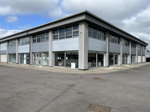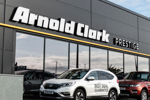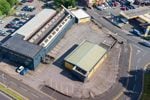With new car volume falling, one of the few beneficial features of the last decade is reversing. This year will end down on 2005 by just under 4% after a 5% fall last year. Add in a five-year high on UK interest rates at 5% and the probability of growth resuming next year is low.
The late Nineties and the first three years of the new decade were the best growth spurt on record with a 30% gain from trough to peak.
Used cars sell in the UK at treble the rate of new but, says E&Y, margins are declining here, too, because of the ever-cheaper new cars and the enhanced ability for consumers to research price offers on the internet.
Servicing, one the biggest margin earners for dealers, is also under pressure. Intervals are rising and what little servicing is now required is done quicker. The average age of the car parc is lower and cars are far more reliable with the inevitable effect on parts sales. Despite the huge rise in the number of cars on the road, service revenues tumbled 8% between 1999 and 2004 to £3.8bn.
Despite an expected growth in the UK car parc to 34m cars, the service market will continue its decline, according to TrendTracker.
The car manufacturers are exacerbating the problem by offering multi-year free servicing for the consumer and hedging their bets by buying service hours in bulk and at a substantial discount from the dealers.
#CCD_ART_SPLIT# But the worst trend of the lot, according to E&Y, is finance and insurance – long the comfortable part of the deal for vehicle retailers. Recently, vehicle manufacturer-tied finance houses have started to report that business is down by as much as 20% year-on-year. This is in line with the experience of other retail sectors.
Consumers are increasingly arranging finance independently from the retailer through bank loans, home mortgage increases, internet loan providers and even credit card debt.
Insurance is also being sold online and by direct-sell call-centres – techniques winning share from the car retailer in-house insurance offers.
What is worse is that dealers have had to take on specialist staff to comply with financial services regulations, which adds cost at just the time that natural revenues are in decline.
Consumer expectation is being shaped all the time by the media and by ads from car supermarkets in a way that is detrimental to the franchised dealers, E&Y says. Many consumers “believe that they are being ripped off by new car pricing”.
As a result, consumers are researching their purchases for longer and over a wider area. Specialist salesmen in the showrooms are struggling to keep up with the consumer on product and pricing knowledge.
The accountants conclude that the obvious consequence of the trends is further and faster consolidation because the big groups benefit from the higher quality of management, more clout with the carmakers, and economies of scale. The 6,000 dealers in the UK will reduce and more will fall into the hands of the large groups. At the moment, the market leader – Pendragon – has only 6% of the market while the top 10 have only 28%. According to the E&Y assessment of what makes a successful retailer, the number one tip is rather obvious – represent a growth brand. The worst position is to be with one of the volume franchises being squeezed between the value and premium brands.













Login to comment
Comments
No comments have been made yet.